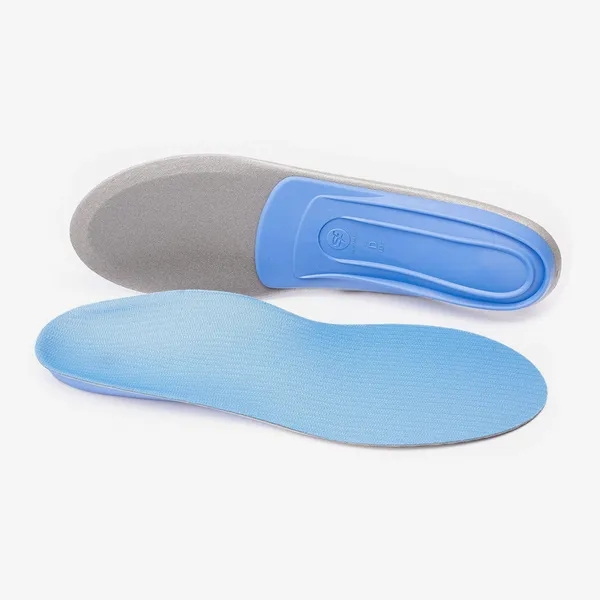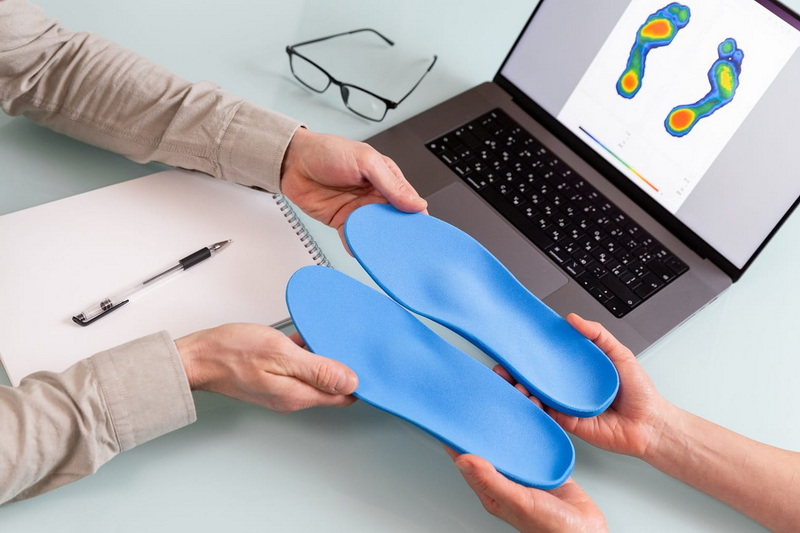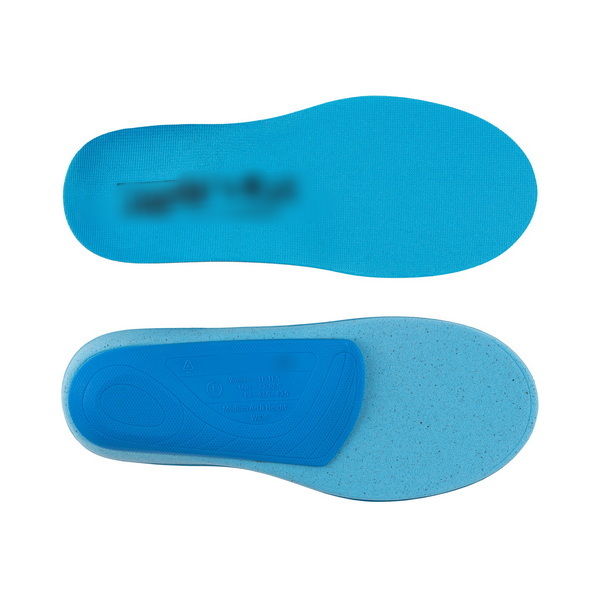Views: 222 Author: Edvo Publish Time: 2025-10-26 Origin: Site











Content Menu
● Understanding the Purpose of Medical Necessity Documentation
● When Orthopedic Shoes and Orthotics Are Medically Necessary
● Core Components of a Medical Necessity Letter
>> 4. Recommended Product and Specifications
>> 7. Professional Endorsement
● Sample Medical Necessity Template
● Common Mistakes in Writing Medical Necessity Letters
● How to Support Letters with Clinical Evidence
● Guidance for Healthcare Providers
● How OEM Manufacturers Can Assist Clients
● The Role of Technology in Documentation
● Essential Phrases to Use in Medical Necessity Statements
● Achieving Compliance and Reimbursement Success
● FAQs About Writing Medical Necessity for Orthopedic Shoes and Orthotics
>> 1. What conditions make orthopedic shoes medically necessary?
>> 2. Can general practitioners write these letters?
>> 3. How long should a medical necessity letter be?
>> 4. Are digital copies acceptable?
>> 5. How can manufacturers help clients with documentation?
Medical documentation plays a crucial role in ensuring patients receive the orthopedic footwear and orthotic devices they truly need. Writing a clear and accurate medical necessity statement not only helps healthcare providers but also assists insurance companies and patients in understanding why these custom products are essential for treatment.
This comprehensive guide explains how to write a professional, well-supported medical necessity letter for orthopedic shoes and orthotics, covering structure, clinical justification, examples, and writing strategies. It also provides insights for healthcare professionals, insurers, and OEM manufacturers who supply orthopedic footwear and inserts.

A medical necessity statement is an official record used to explain why a specific medical device or service is required for patient care. In the case of orthopedic shoes or orthotics, this letter is usually submitted to insurance companies or healthcare administrators to justify reimbursement or authorization.
Why this letter matters:
- It facilitates insurance approval for medical footwear and orthotics.
- It documents the clinical rationale for product use.
- It ensures patients receive durable, customized devices suited to their needs.
- It demonstrates compliance with healthcare regulations.
A clear, professional statement can be the difference between approval and denial of essential orthopedic support.
Orthopedic shoes and orthotics are commonly prescribed to support foot alignment, relieve discomfort, and correct gait abnormalities. Determining medical necessity depends on the underlying medical condition and its impact on a patient's mobility or health outcomes.
Conditions that often justify medical necessity include:
- Diabetes: Chronic conditions leading to neuropathy or foot ulcers.
- Severe arthritis: Causing joint stiffness and gait abnormalities.
- Congenital deformities: Such as clubfoot or severe flatfoot.
- Neurological disorders: Including cerebral palsy, muscular dystrophy, or stroke aftereffects.
- Chronic pain and overuse injuries: For example, plantar fasciitis or Achilles tendinitis.
- Structural imbalances: Including leg length discrepancies or poor posture.
Each case should be supported by medical diagnosis codes and described in connection with the functional limitations caused by the condition. This helps insurers understand not just the presence of disease, but the functional impairment requiring correction through orthopedic support.
A properly structured medical necessity letter generally includes these essential sections:
Include the patient's full name, date of birth, medical record number, and diagnosis details. For formal insurance documentation, use standardized ICD-10 codes.
Describe in clinical terms how the patient's condition manifests. For instance, “Patient presents with severe overpronation causing ankle instability and knee stress.”
Explain how the condition restricts the patient's normal function. For example, “Patient reports pain during walking exceeding 10 minutes” or “Unable to maintain balance without supportive footwear.”
Identify the prescribed item and its design based on biomechanical needs — such as “custom-molded orthopedic shoes with metatarsal support” or “carbon-fiber orthotics for forefoot offloading.”
Provide logical reasoning linking the condition to the product recommendation. The justification should explain why standard or off-the-shelf footwear is inadequate.
Outline measurable goals such as pain reduction, improved gait, or prevention of ulceration.
Include the provider's signature, medical license number, contact details, and clinic information.
A concise yet detailed letter demonstrates accountability and medical authority, increasing approval likelihood.

This patient requires custom orthopedic shoes and insoles to correct excessive pronation and chronic plantar heel pain associated with plantar fasciitis. Over-the-counter insoles have not provided sufficient biomechanical correction or symptom relief.
Custom-fitted orthopedic shoes designed with medial arch reinforcement will provide the necessary support to alleviate heel tension and restore efficient gait function. Without such intervention, the patient's pain and inflammation are expected to worsen, affecting mobility and daily activities.
This structure ensures every essential detail is communicated in a professional tone.
Even experienced providers can make errors that delay or prevent approval. Be mindful of these pitfalls:
1. Vague medical justification – Avoid generic phrases such as “foot discomfort.” Specify causes, functional losses, and clinical findings.
2. Lack of objective data – Include examination details or test results, such as gait analysis reports.
3. Missing connection between diagnosis and device – Insurers require a clear cause-effect relationship.
4. Forgetting follow-up recommendations – Mention if the patient requires ongoing adjustments or periodic reevaluation.
5. Absence of professional signature – Ensure proper authentication to validate the document legally.
Being thorough in both structure and language ensures that the necessity is defensible and transparent.
To reinforce the necessity, attach supporting records such as:
- Gait analysis findings
- Pressure mapping data
- X-rays or MRI reports related to structural abnormalities
- Notes from physical therapy sessions
- Photos showing deformities or affected areas
These attachments not only improve credibility but also establish medical continuity.
Physicians should create documentation that blends medical expertise with clear, readable explanations. The letter's audience often includes non-clinical insurance reviewers, so use concise, outcome-focused language.
Provider tips:
- Use measurable criteria (“pain improved by 30% after 4 weeks”).
- Avoid excessive medical jargon unless it's essential for clarity.
- Review the insurance's medical policy on orthopedic footwear requirements.
- Keep the tone factual and objective to maintain professionalism.
Consistency across patient reports, treatment notes, and necessity letters prevents administrative discrepancies that can trigger denial.
As an OEM orthopedic shoe and orthotic manufacturer, providing supportive documentation and education materials can help healthcare clients improve their submission accuracy.
Ways manufacturers can contribute:
- Share detailed product descriptions and component specifications.
- Provide demonstrations explaining how product design aligns with clinical needs.
- Create simplified templates and user manuals for medical practitioners.
- Offer technical support to clinics ordering custom fittings or adjustments.
Collaborative partnerships ensure mutual success between brands, distributors, and clinical institutions.
Digital tools increasingly simplify the process of writing and submitting medical necessity records. Modern data platforms improve accuracy and minimize repetition.
Effective technologies include:
- Electronic medical record (EMR) systems for auto-generating documentation.
- 3D foot scanning devices to capture precise anatomical data.
- AI diagnostic assistants to interpret gait analysis.
- Telemedicine platforms allowing remote assessment for orthotic adjustments.
By adopting technology, healthcare teams and manufacturers speed up decision-making while maintaining compliance with privacy standards.
Using standardized medical terminology and phrases improves clarity and professionalism.
Examples of effective phrasing:
- “Orthopedic intervention is required to restore functional gait stability.”
- “Standard footwear fails to provide required offloading for pressure reduction.”
- “Device will maintain subtalar alignment and reduce plantar stress.”
- “Without prescribed orthotics, patient remains at risk of chronic ulceration.”
Such language communicates purpose and medical rationale concisely, aligning the statement with clinical documentation norms.
Insurance carriers have specific guidelines for evaluating orthopedic footwear claims. To improve approval rates:
- Review insurer-specific criteria before submission.
- Ensure all signatures, dates, and diagnostic codes are accurate.
- Maintain proper patient consent and documentation storage.
- Use consistent terms across related clinical documents (e.g., “custom orthotic shoe” instead of varying synonyms).
Proper compliance not only prevents claim rejection but also builds reputation and reliability for the clinic and manufacturer alike.
Writing a medical necessity statement for orthopedic shoes and orthotics requires precision, clarity, and clinical justification. Physicians need to connect diagnosis, symptoms, and functional limitations with the prescribed product, ensuring the reasoning is both logical and data-supported.
For OEM manufacturers and distributors, supporting such processes through technical materials and transparent product data helps strengthen trust with healthcare institutions worldwide. A well-crafted letter reinforces evidence-based medical care, promotes accessibility, and enhances patient outcomes across the orthopedic industry.

They are typically prescribed for chronic foot pain, deformities, diabetic ulcers, or orthopedic conditions that impair mobility and cannot be managed with standard footwear.
Yes, but ideally a podiatrist, orthopedist, or rehabilitation specialist should authorize the statement for credibility and insurance compliance.
Most insurers prefer concise letters of 300–600 words summarizing all clinical data and justifications without unnecessary repetition.
Many insurance providers now accept electronic submissions through secure healthcare communication systems, provided all signatures are digitally verified.
Manufacturers can offer detailed product data sheets, professional visuals, and technical guides to support the clinical justification process.